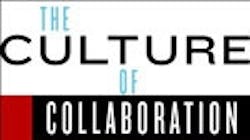The Culture Of Collaboration
In his new book, The Culture of Collaboration: Maximizing Time, Talent and Tools to Create Value in the Global Economy, Rosen explains how collaborative culture is changing business models and the nature of work. Rosen, chief strategist of the collaboration and communication consulting firm, Impact Video Communication, shows how Toyota, Boeing, Procter & Gamble, BMW, Industrial Light & Magic, Mayo Clinic, The Dow Chemical Co. and other leading organizations create value through collaboration. He also describes the trend towards real-time, spontaneous collaboration and the "deserialization" of interaction and work.
The following is a discussion with Rosen based on the principles of his book.
Q: Can you explain the tenets of the new 'Culture of Collaboration' and talk about Dow Chemcial uses these methods to create value.
A: Effective collaboration is about maximizing time, talent and tools to create value. The old way was the pass-along approach. I do my job and then pass along my work product to you. You do your piece of it and pass it along to somebody else. That way was incredibly inefficient. The new way is that we all come together simultaneously to work and make decisions regardless of our function, level or role. Making this happen requires tools and processes plus the Culture of Collaboration. Without the culture, collaboration tends to stall and the best tools, processes, systems and leadership strategies fall flat.
New tools are becoming available, but tools have limited utility without the culture to support them. Right now business models are being realigned around collaboration and the nature of work is changing. Transitioning a command-and-control culture into a collaborative one involves changing hierarchical structures and recognition and reward systems, just to name a couple of issues.
Dow uses 300 collaborative rooms called iRooms. These rooms link Dow people in forty-three countries via an IP network carrying video, voice and data. The iRooms provide a range of capabilities including Polycom videoconferencing, audio conferencing, shared digital whiteboard and application sharing. People can participate in collaborative sessions from iRooms or from notebook computers.
Dedicated collaborative spaces like iRooms are a success factor in making collaboration work. However, there's a dichotomy. While these spaces make a difference, there is also a shift towards spontaneous collaboration. For this, there's no need to stop working and walk down the hall. No appointment necessary. Collaboration increasingly fits our work styles and lifestyles. All we need is a desktop, notebook, or handheld device.
Q: How are companies that you have worked with able to build trust among multi-cultural collaborators?
A: Well, trust is one of the key cultural elements of collaboration. Global teams have particular challenges when it comes to trust and collaborating, because of language and cultural barriers. Even if the organizational culture embraces trust, differences in regional cultures can introduce an additional dynamic.
When BMW was preparing to launch the X5 Sports Activity Vehicle, the goal was to reduce product cycle time from sixty to thirty-five months. BMW would assemble the vehicle at its Spartanburg, South Carolina plant, but engineers in both Spartanburg and Munich were collaborating to design the X5 and the processes supporting production. Using both synchronous and asynchronous collaboration tools, the teams leveraged both time zones and created a round-the-clock design environment. Ultimately, they accomplished their goal of reducing cycle time. The collaborative approach was a major shift.
The automaker realized that the change went well beyond tools and systems. What the company called "telecooperation" would change the nature of work and the culture of its organization. To enhance collaboration and trust, BMW developed ways to integrate collaboration into every business unit, function and partner organization.
In collaborating across regional cultures, there is a dynamic that produces a broader perspective and creates greater value. This is particularly true when it comes to solving complex engineering problems. Success requires building trust and bridging cultures so that collaborators benefit from differences rather than fail because of them. For a new team, this can take weeks.
Boeing uses cross-cultural collaboration to tap the rich tradition of Russian aerospace engineering. The company has been increasing the role of Moscow-based engineers since the mid-1990s when the company asked contract engineers in Russia to help redesign first class overhead bins on the 777. The difference in culture and in aerospace tradition allowed the Russian engineers to think about the problem differently. They ended up developing a far more effective bracket before working on the bins. Because of those early successes with overhead bins, Moscow-based engineers now work on many Boeing aircraft programs, collaborating in real time with counterparts around the globe. A multi-cultural perspective can bring value to collaboration and help produce better products.
Q: In the book you discussed how Six Sigma could break down silos and increase collaboration. How does this work?
A: In most organizations, silos develop. We all experience it. Information technology people prefer interacting with other IT people rather than, say, with marketing folks. People on the factory floor may hardly ever see outside sales reps. Everyone is in their own little world. As organizations adopt collaborative cultures, people interact regardless of their function or level. Six Sigma is part of that equation, because it encourages people throughout the organization to work together in improving quality.
For Dow , Six Sigma has enhanced the collaborative culture and created value. Teams implementing Six Sigma are usually globally dispersed, and they typically use Dow's iRooms to bridge the gap. Because of Six Sigma, people who previously had no contact with one another now collaborate regularly. To remove defects from manufacturing, Dow assembles a cross-functional team. Plant operators in factories contribute ideas. Previously, operators simply carried out directions from superiors. However, Dow has learned that quality depends on plant operators collaborating with people in multiple functions.
Evan Rosen is the chief strategist of Impact Video Communication, a collaboration and communication consulting firm. Information on his book, The Culture of Collaboration can be found at www.thecultureofcollaboration.com.
